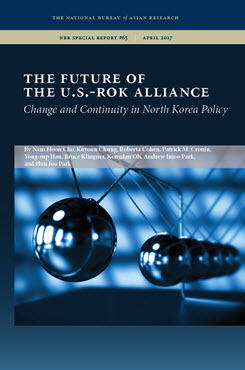Change and Continuity in the U.S.-ROK Alliance and North Korea Policy
This essay examines key issues in the U.S.-ROK alliance and assesses U.S. and ROK policy options for addressing the threat posed by North Korea.
EXECUTIVE SUMMARY
MAIN ARGUMENT
President Donald Trump has inherited a worse Northeast Asian security environment than any other president since the end of the Cold War. While previous changes in administration have brought changes in U.S. policy toward the region, the Trump administration must carefully consider possible alterations and work with South Korea and other nations, including China and Russia, to execute these strategies. Given its preference for an “America first” policy, the Trump administration is expected to make meaningful changes in Asia-Pacific security strategy, and in North Korea policy specifically, while exploring a new approach to alliance management with the goal of building a stronger, safer U.S. at a lower cost. In the rapidly changing security environment of the Asia-Pacific, this endeavor necessitates a patient approach that reflects U.S. values and interests and formulates a security and defense strategy based on an assessment of the merits and demerits of U.S. policy regarding specific issue areas.
POLICY IMPLICATIONS
- As it reviews the Obama administration’s rebalancing strategy, the Trump administration needs to articulate an approach to Northeast Asia that maintains strong security alliances. Prioritizing economic deals with China at the cost of U.S. security interests in the Asia-Pacific would endanger regional stability and undermine the credibility of the U.S. with its allies.
- The U.S. must strive to cooperate with its ally South Korea through all existing bilateral institutions and channels before making unilateral announcements pertaining to the alliance. If the next South Korean president comes from a current opposition party, as is expected, a rise in South Korean nationalism could create more tension in the alliance. Leaders of both countries will have to work together to manage these issues to avoid friction.
- The U.S. needs to develop a new approach to deterrence that includes a dialogue mechanism as well as increased technical capabilities. If the Terminal High Altitude Area Defense system is not deployed in South Korea during the first half of 2017 as expected, it will become more difficult to deploy in the midst of China’s strong opposition, and other issues will come into play in alliance management.


